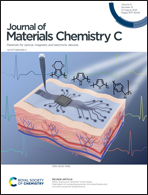Computational electromagnetics in plasmonic nanostructures
Abstract
Plasmonic nanostructures have emerging applications in solar cells, photodynamic therapies, surface-enhanced Raman scattering detection, and photocatalysis due to the excitation of localized surface plasmons. The exciting electric field resulting from the collective oscillation of free electrons is highly dependent on the dielectric medium, shape, size, composition, and configuration of plasmonic nanostructures. From an engineering perspective, one can tune the optimal properties in the desired applications of geometrical parameters such as the shape, size, and nanoparticles’ configuration. Such optimization should be performed analytically (with exact solutions) or numerically (with specific approximations). Despite the accuracy of the analytical approaches (such as Mie theory), they have mainly been limited to arbitrary and simple geometries, i.e. spheres. This review revisited the theory of mostly implemented numerical approaches for simulating the optical response of plasmonic nanostructures. This paper discusses the finite difference time domain (FDTD), finite element method (FEM), discrete dipole approximation (DDA), and boundary element method (BEM) from both theoretical and practical points of view. The most recent applications of numerical simulations in different fields are presented and discussed. This comprehensive review can be promisingly considered as a guide for the researchers.



 Please wait while we load your content...
Please wait while we load your content...